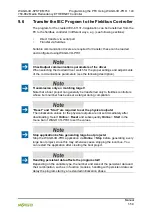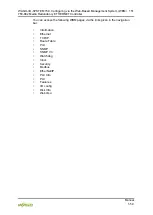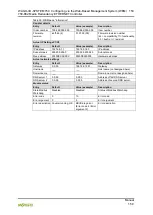
WAGO-I/O-SYSTEM 750
Programming the PFC Using WAGO-I/O-PRO 139
750-882 Media Redundancy ETHERNET Controller
Manual
1.5.0
To cyclic tasks applies:
Cyclic tasks with > 30 min. call intervals not possible!
Cyclic tasks with a call interval of more than 30 minutes are not possible.
9.4.1
IEC Task Sequence
1.
Determine the system time (tStart).
2.
If no full local bus cycle has run since the last time the outputs were written:
Wait until the next local bus cycle is completed.
3.
Reading of inputs and reading back of the outputs from the process image.
4.
If the application program has been started:
Execute the program codes for this task.
5.
Writing of the outputs to the process image.
6.
Determine the system time (tEnd).
tEnd - tStart = runtime for the IEC task
9.4.2
Overview of Most Important Task Priorities
Table 38: Task Processing
Task
Importance of the Execution
Local bus task, fieldbus task
of priority before all others
Normal task
after the local bus and fieldbus tasks
PLC-Comm task
after the normal tasks
Background task
after the PLC-Comm tasks
Local Bus Task / Fieldbus Task (Internal)
The local bus task is an internal task, which updates the I/O module data from
the process image. Fieldbus tasks are triggered by fieldbus events
(communications); therefore, they only use processing time when the fieldbus is
active (MODBUS, EtherNet/IP).
Normal task (IEC-Task priorities 1-10 that can be set in CODESYS)
IEC tasks with this priority may be interrupted by the local bus tasks.
Therefore, configuration for the connected modules and communication via
fieldbus with the watchdog activated for the task call interval must be taken into
account here.
PLC-Comm task (internal)
The PLC-Comm task is active when logged in and takes up communication with
the CODESYS gateway.






























